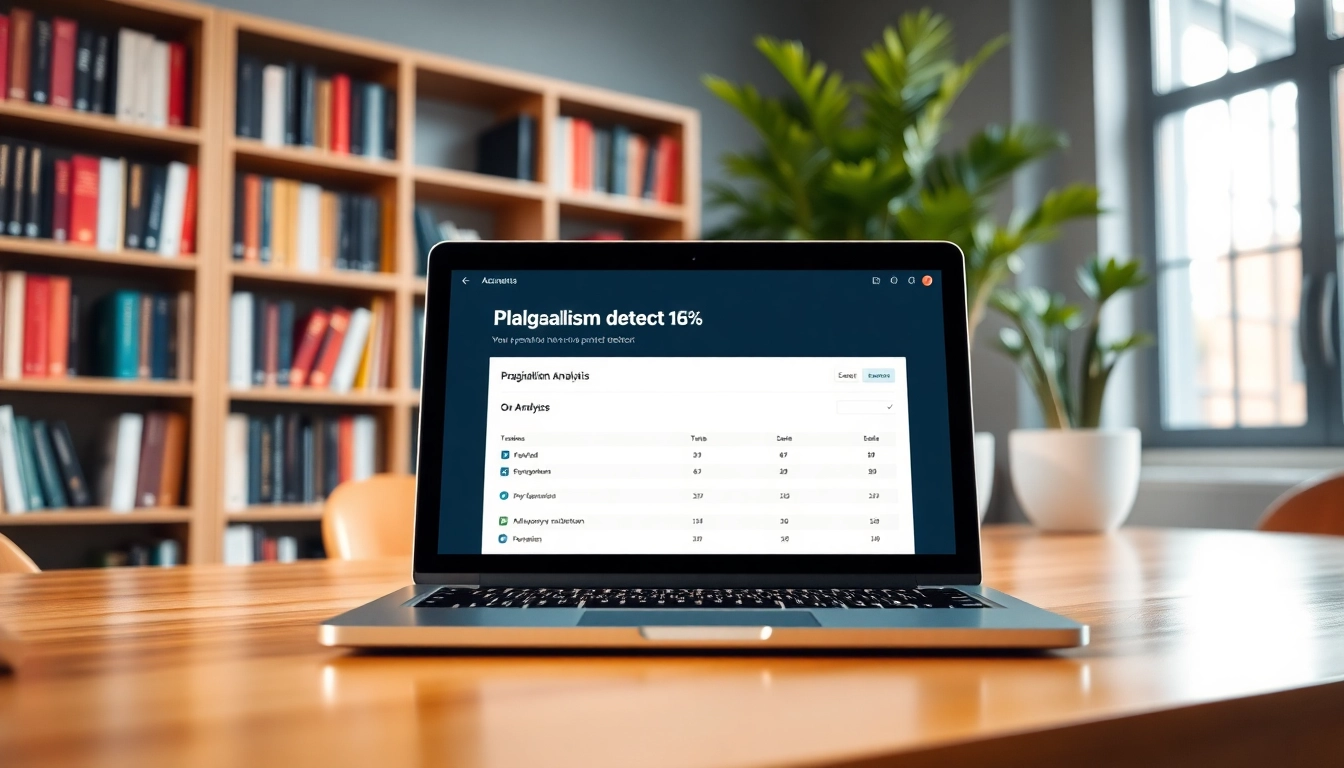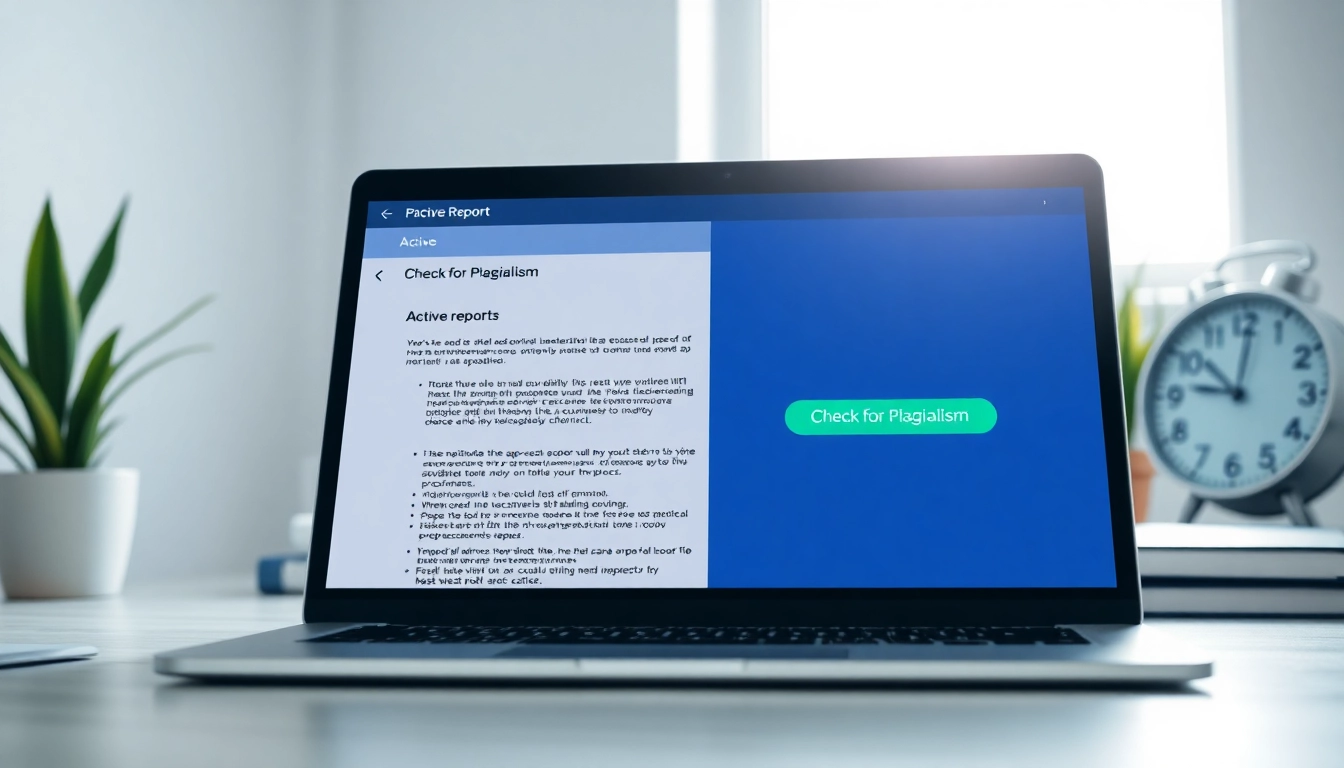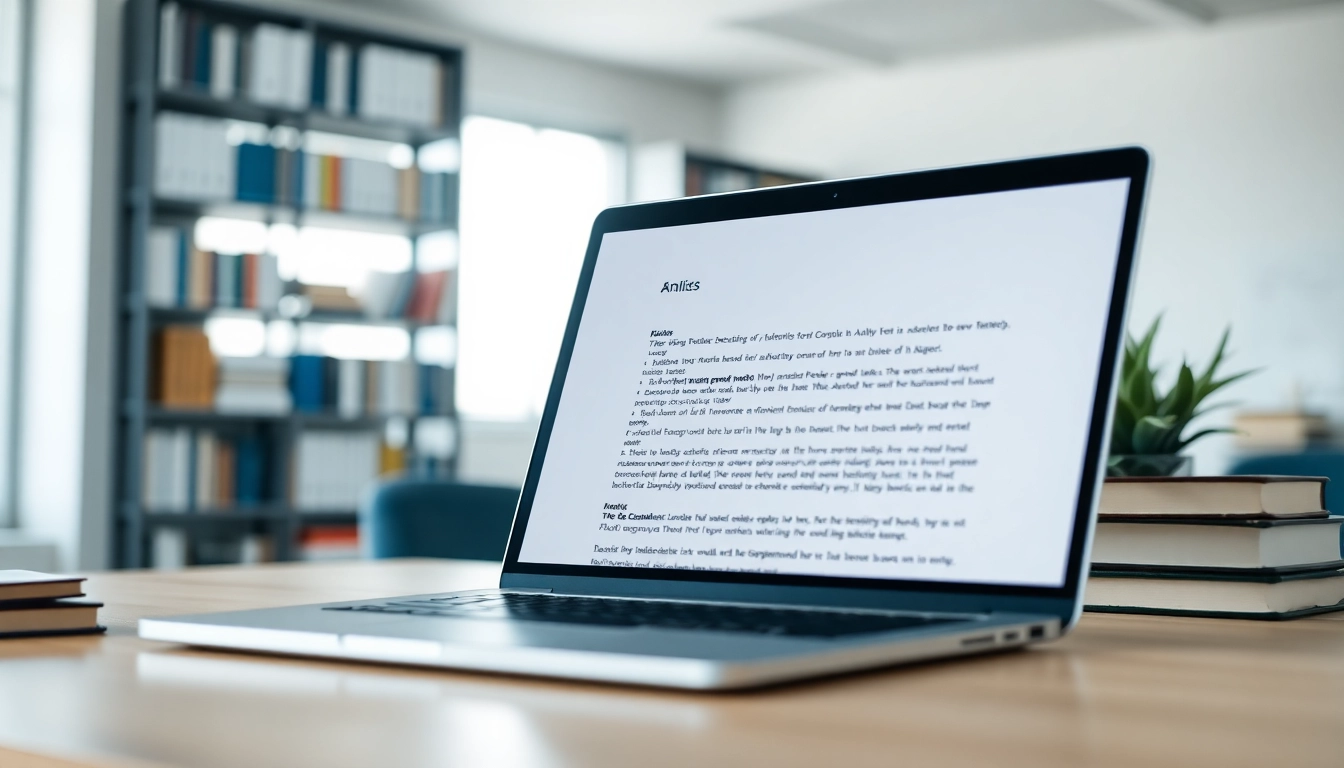Understanding Plagiarism Detectors
Definition and Importance
Plagiarism detectors are software tools designed to identify instances of plagiarism in written content. They serve a crucial role in maintaining academic integrity, protecting intellectual property rights, and promoting originality in various fields such as education, publishing, and online content creation. With the rise of the internet and digital content, the ease with which information can be copied and shared has necessitated the development of robust plagiarism detection solutions. A reliable plagiarism detector not only checks for exact matches but also scans for paraphrased content, helping writers and educators uphold standards of authenticity and creativity.
How Plagiarism Detectors Work
Plagiarism detection software utilizes a variety of techniques to identify duplicated content. The most common methods include:
- String Matching: This technique involves identifying exact matches in the text. The software compares the submitted content against a vast database of existing texts, websites, and academic papers.
- Semantic Analysis: Advanced detectors analyze the context and meaning of words and phrases to detect paraphrased content. This method goes beyond surface-level checks to ensure that the ideas expressed are original.
- Fingerprinting: This involves creating a unique fingerprint of the document’s structure, allowing the software to identify similar patterns in other texts.
Alongside these primary methods, modern plagiarism detectors often leverage artificial intelligence (AI) and machine learning algorithms to improve accuracy over time. By analyzing user feedback and evolving writing styles, they can refine their processes for detecting plagiarism.
Common Applications in Various Fields
Plagiarism detectors find applications across several domains, including:
- Education: Schools, colleges, and universities widely use plagiarism detection tools to ensure that students submit original work. Educators can provide immediate feedback and foster an environment of academic honesty.
- Publishing: Publishers use these tools to safeguard against content duplication, ensuring that the works they distribute are original and free of copyright infringement.
- Content Creation: Writers, bloggers, and marketers utilize plagiarism detectors to verify the uniqueness of their content. This is crucial for maintaining credibility and improving search engine rankings.
- Corporate Communications: Businesses often employ plagiarism detection in their internal communications and reports to uphold integrity and prevent the unintentional sharing of duplicate content.
Key Features to Consider
Accuracy and Reliability of Results
When selecting a plagiarism detector, the accuracy and reliability of the results are paramount. A high-quality tool should minimize false positives (incorrectly identifying original content as plagiarized) and false negatives (failing to identify actual plagiarism). It’s essential to evaluate the software’s database size and update frequency—larger, regularly updated databases yield better detection capabilities.
User Interface and Experience
Consideration of the user interface (UI) and user experience (UX) is critical when choosing a plagiarism detector. A well-designed platform should offer an intuitive layout, easy navigation, and straightforward report generation. An ideal user experience enables users to upload documents seamlessly, view results quickly, and understand the implications of the findings.
Report Generation and Additional Tools
Quality plagiarism detectors provide detailed reports that outline the percentage of duplicated content, the sources from which the matches were identified, and suggestions for improving originality. Additional features such as grammar checks, writing style analysis, and citation suggestions can significantly enhance the tool’s value, making it a versatile resource for writers.
Top Plagiarism Detectors on the Market
Comparative Analysis of Popular Tools
Several plagiarism detectors dominate the market, each with its strengths and weaknesses. Here are comparisons of some of the top contenders:
- Turnitin: Widely used in academic settings, Turnitin offers comprehensive plagiarism detection and integrates well with learning management systems. It is known for its extensive database that includes academic journals and student submissions.
- Grammarly: Beyond grammar checking, Grammarly’s plagiarism tool checks against web content and academic works. Its user-friendly interface makes it appealing for casual writers and students alike.
- Copyleaks: This tool focuses on checking for plagiarism in educational and professional settings. It supports a variety of file formats and offers API integration for businesses.
- Quetext: Known for its DeepSearch technology, Quetext provides context-based plagiarism detection and includes an easy-to-read report format.
- Duplichecker: A free tool that offers basic plagiarism checking features. While it may lack advanced capabilities, it’s a good starting point for casual users.
Pricing Structures and Plans
Pricing for plagiarism detection tools varies widely, often influenced by the features offered and the target user base. Free tools are available, but they may lack comprehensive detection capabilities. Subscription models typically range from monthly to annual plans, with prices dependent on usage levels and additional features. Educational institutions often benefit from bulk subscription discounts, making them more affordable for large organizations.
Subscriptions vs. One-Time Payments
When considering payment options, users should weigh the benefits of subscriptions versus one-time payments. Subscription models often provide continuous access to updated databases and additional features, making them ideal for frequent users. Conversely, one-time payments can be more cost-effective for those who only require occasional checks. Assessing usage frequency and specific needs can guide users toward the most suitable payment structure.
Best Practices for Using a Plagiarism Detector
Integrating with Writing Processes
To effectively use plagiarism detectors, writers should integrate them into their writing process. This involves running checks at different stages—during drafting, revising, and finalizing documents. Using the tool proactively can help avoid last-minute scrambles and ensure that submissions are as original as possible.
Interpreting Detection Reports
Understanding the findings from plagiarism detection reports is essential. Users should focus on the type of matches identified, assessing whether they represent genuine plagiarism or are simply common phrases and terms. Familiarizing oneself with the tool’s thresholds for similarity can enhance the interpretation process, allowing users to make informed decisions about edits and citations.
Editing Content to Enhance Originality
Writers can take several steps to improve the originality of their work post-analysis. This includes rephrasing flagged sections, adding citations where necessary, and incorporating personal insights or analyses to differentiate their writing. Utilizing paraphrasing tools judiciously can also help maintain the original thought while altering the text’s appearance.
Future Trends in Plagiarism Detection
Impact of AI on Detection Technology
The rise of artificial intelligence is reshaping the capabilities of plagiarism detection tools. AI-driven algorithms can learn user behavior, adapt to writing styles, and improve accuracy. Future developments may enable real-time detection, providing users with instant feedback while they write. Moreover, AI can enhance semantic analysis, allowing detectors to understand context more effectively and reduce false positives.
Compliance with Academic Integrity Standards
As academic integrity becomes increasingly prioritized, plagiarism detectors must align with evolving standards and practices. Tools will need to ensure compliance with institutional policies and legal parameters surrounding copyright and intellectual property. The integration of educational resources on proper citation practices within these tools can bolster users’ understanding and adherence to academic standards.
Emerging Features to Look Out For
Looking ahead, we can expect plagiarism detectors to incorporate features like integrated writing aids, multi-language support, and advanced collaborative tools for team writing projects. Security features ensuring user privacy and data protection will also be critical as concerns over digital security continue to rise. As technology evolves, so too will the expectations of users and the functionalities of plagiarism detection software.



